Secret Geniuses Who Shocked Their Teachers
Let's check out the story of the slacker who was 20 minutes late, whose two mathematical solutions shocked his professor and other accounts of secret geniuses!
ScienceIt started off as a regular day for Doctor Jerzy Neyman, back in 1939. The Polish mathematician and statistician was teaching his first-year graduate level statistics class at the University of California in Berkley. Jerzy was a genius, establishing the statistical philosophies and practices that many scientific tests are still based on today.
He’d published books, devised methods, and was considered an expert in his field. Now he was a professor at one of the best University’s in the world. His class that morning was attentive, and eager to learn, and so he started the lesson. But 20 minutes later, the door burst open, and a student, a young man, rushed to his seat.
Jerzy was annoyed, but continued with the lesson, discussing two equations for statistical theorems he’d written on the chalkboard. The young man scribbled in his notes furiously, and the class was dismissed soon after.
A few days later, the same student knocked on Jerzy’s door. He apologized that his homework had taken so long and asked if the professor still wanted it. Jerzy was confused. He hadn’t set any homework for that class. Assuming this student was just a slacker messing around, Jerzy told him to just leave the paper on his desk and he’d get to it eventually.
Like most professors, Jerzey’s desk was made of a mountain of papers, one that would take him weeks, if not months, to get through. The student did as he was asked, and then left. Neither of them thought any more of it. That was, until Jerzey finally got around to marking the paper, nearly six weeks later.
The professor read through the supposed slacker’s paper, and then read it again in disbelief. He ran through it over, and over, put his own calculations against it, and the result came back the same every time. This changed everything!

He quickly wrote something down and made a beeline to the student’s house, even though it was early on a Sunday morning. He banged on the door, urgently, and his student opened it, bewildered.
Jerzy rushed in and congratulated the young man, whom he’d mistaken for a slacker; clearly, he was a genius! Jerzey had just written an introduction for his paper and wanted to check it with him before he sent it off for professional publication. His work was going to change the world!
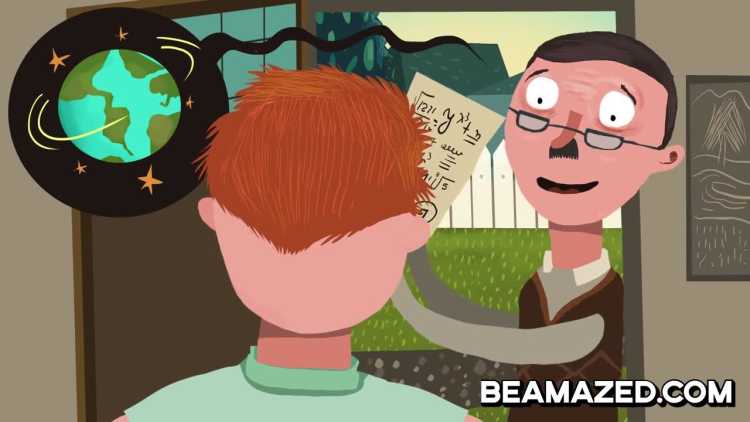
But the student was confused. Really confused. What paper? He’d just handed in his homework like he usually did. What was the professor going on about? Let’s back up six weeks.
After arriving 20 minutes late to class, the student, a Mister George Dantzig, had missed the opening section of his professor’s lecture. If he’d been there, he’d have realized that the class was discussing famously unsolved problems in statistics, two of which Jerzey had written down on the board.
Assuming these two problems were homework, George copied them down, and took them home. They were a little tougher than usual, so it took him a while, but after a few days he had the answers and submitted them, assuming he’d get in trouble for being late. He had no idea he’d just cracked 2 problems that had been considered impossible to solve for years!

Jerzey was just as shocked as George to discover this! A year later, when George was worried about what his thesis topic would be, Jerzey said that if he submitted his answers to the two problems in a binder, he’d accept them as his entire thesis; that’s how impressive his feat was.
The first of George’s problems was published in 1940, but the second was published in 1950 after the Second World War. It was during this time that George received a letter from another statistician, Abraham Wald, who’d also managed to solve the second problem.
However, Abraham solved it independently from George’s, and had written up the results in his own paper. Because they’d both solved it, George suggested he be included as a coauthor, which he was!
The story of this incredible accident has passed into urban legend, thanks to an interview George once held with Lutheran minister and TV evangelist Robert Schuller. Schuller was a strong believer in the power of positive thinking, and after George told him his incredible story, he received a letter from the minister asking if he could use it in an upcoming book.
George agreed, but the story Schuller printed was rife with misinformation. He wrote that even Einstein hadn’t been able to solve these problems, and that Jerzy had been so impressed by George’s findings, he’d offered him a job at Stanford university on the spot! Neither of these things were true.
But the story itself still supported Schuller’s belief; that positive thinking is what helped George answer those two questions. If George had been told the problems were unsolvable, he might have given up. Instead, by assuming there was a way around the problem, his mindset was able to change the game!

George went on to have an incredible career, winning numerous awards for his work, and influencing a whole new generation of world-changing mathematic scientists. His work into the development of simplex programming, the foundations of linear programming, without which we wouldn’t have computers, was so essential that he’s seen as something of a founding father of the field.
There’s now even The Dantzig Prize, given out by the mathematical programming society to individuals who show incredible originality, breadth, and depth in their research! In 1997, George’s homework story was translated loosely into the foundations of the Oscar winning film, Good Will Hunting.
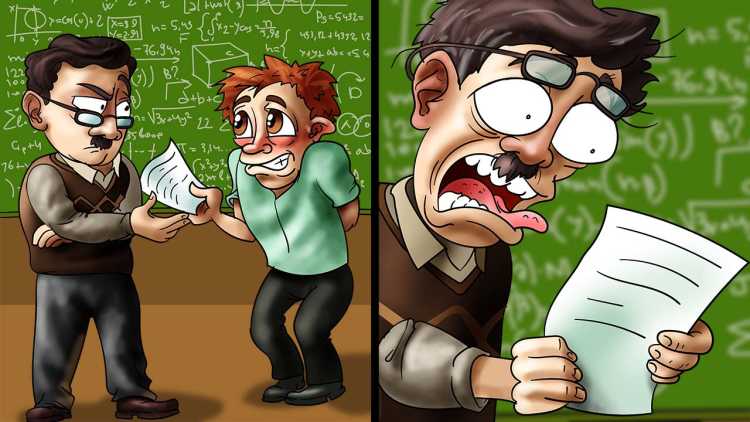
The movie follows the story of an underprivileged kid, Will Hunting, who works as a janitor at a university and solves impossible math problems which earns him a place there. Therefore, there’s almost no connection to George whatsoever, but real Will Hunting’s do exist out there and their stories are even more inspiring!
Yu Jianchun
Back in 2016, Professor Cai Tinxin of Zhejiang University in China received a strange letter, containing a brief explanation and a seemingly simple equation. The mathematics expert looked it over and was stunned by what he saw. It was an alternative method to verify Carmichael numbers.
For those who aren’t mathematically inclined, Carmichael numbers are sometimes called “pseudo primes”. They appear to be prime numbers, but complicate the task of determining true prime numbers, which are divisible only by 1 and itself.
The roles they play in computer science and information security are huge, but the method for working out whether they’re really prime or not was established 20 years ago, and for longer numbers, is increasingly arduous to figure out. Or at least, it was, until the letter arrived. But who had come up with this wonderful workaround?
Well, when the professor looked up at the sender, he couldn’t believe it. It was from a young Chinese migrant, called Yu Jianchun, who was a humble worker for a parcel delivery company by trade, and had no college education. He’d studied animal breeding at a vocational school but had always had a passion for numbers.
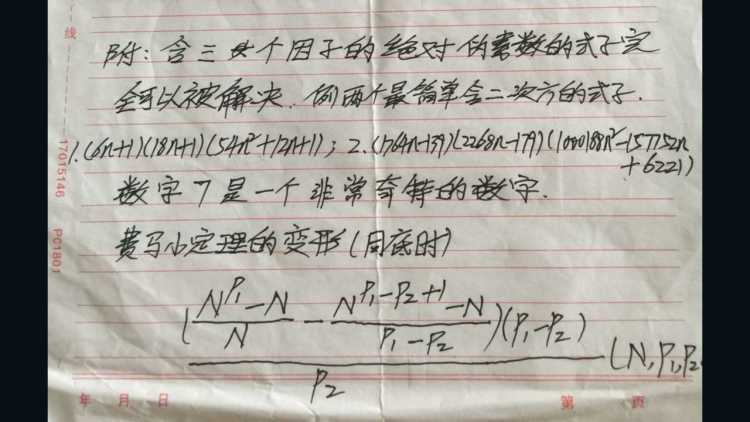
While he had almost no knowledge of geometry or calculus, that didn’t stop him from pouring over calculations in his free time. He came up with multiple theories, sending them to different university professors over the course of 8 years, but this was the first recognition he’d received for any of his work.
And even then, he was incredibly humble. Claiming to be slow and shy, he was so nervous during a presentation of his discovery that he wrote the wrong numbers down on the blackboard! But now, he’s something of a local celebrity, getting all the praise he rightfully deserves!
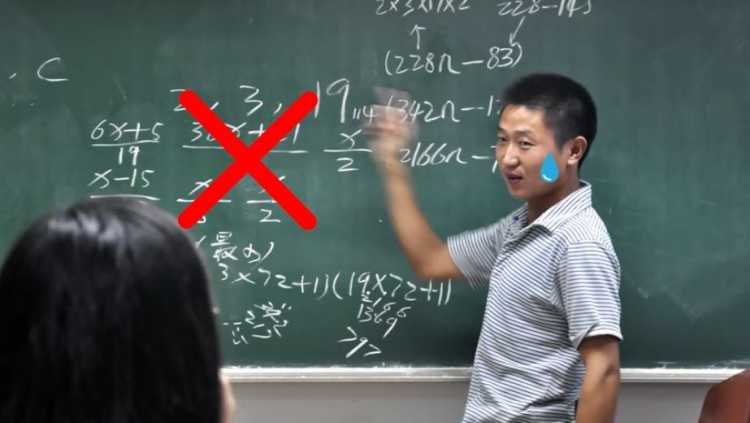
Shakuntala Devi
There’s an age-old stereotype that boys are better at maths than girls. And there’s no one better to prove that that’s bogus than the prodigy that was Shakuntala Devi.
Born back in 1929 into a family of Indian circus performers, her father used to play cards with Shakuntala when, at just 3 years old, he realized she kept beating him. Somehow, this little girl, whose family was too poor to afford to send her to school, could memorize and count cards.
Seeing her potential, Shakuntala’s father took her on road shows to demonstrate her extraordinary mathematical abilities, making her the breadwinner of her family. At the age of 6, she did a show at the University of Mysore, and from there her reputation as a mathematical miracle took off.
By 1950, she was touring Europe, completing incredibly complex sums in a matter of seconds. Her big moment came when she calculated the 23rd root of a 201-digit number in a phenomenally fast 50 seconds.
The same feat took a UNIVAC computer, the fastest computer in the world at the time, 62 seconds. She quickly became known as the human computer and began establishing a list of Guinness World Records!

Do you have a few doubts about just how good she was? Well, try one of her sums on for size. How fast can you solve this multiplication in the below picture without using a calculator, or a pencil and paper? Take your time.

Here's the answer. How long did it take you? A couple of minutes? Or did you just give up? Well, Shakuntala solved this in 28 seconds. And no one has been able to beat this 13-digit mental multiplication record since! Her talent was so extraordinary, that her life and achievements were even made into a film in 2020!
Grigori Perelman
Not everyone wants to be rewarded or even recognized for some of their incredible feats – no matter how deserving they may be. And one of those people is Grigori Perelman. Born in part of the Soviet Union now known as Russia back in 1966, it was apparent from a young age Grigori had an aptitude for maths.
At just 16 years old, he represented the Soviet Union in the 1982 International Mathematical Olympiad, like the Olympics but for "mathletes". Grigori swept the floor with his opponents, achieving a perfect score and winning a gold medal.

After completing his PhD in 1990, he obtained research positions in several US universities, and managed to prove the Soul theorem in Riemannian geometry with incredibly precise proof. There was no denying his brilliance, but having conquered the Soul theorem, his attentions turned to proving the Poincaré conjecture.
Proving this theorem was considered to be one of the most important questions in mathematical history. It was so significant that in the year 2000 it became a Millennium Prize problem, with the Clay Mathematics Institute offering $1 million for the first correct solution.
The Poincaré conjecture was so difficult that it even had Grigori stumped for an answer. For 7 years, nobody heard a peep from him. They assumed he’d hit a dead end, given up, or – worse – retired from mathematics entirely! But then, in November 2002, he submitted his paper, which provided proof of the Poincaré conjecture.
And the world of math exploded! His work took years to vet, but by 2006, a committee of nine mathematicians voted to award Grigori a Fields Medal along with the $1 million prize. But astonishingly, Grigori declined it all.
At first, he claimed that his solution being validated was reward enough. But then he revealed something darker. He did not like the organized mathematical community and felt their decision making was unjust.
He argued Richard Hamilton, another mathematician whose workings greatly impacted Grigori’s understanding of the theorem, was just as responsible, and should receive part of the prize and recognition.

But the Mathematical Overlords refused this. On principle, Grigori refused them! He quit his job in 2006 and disappeared from the mathematical limelight. According to Russian reports, he now lives a humble life, avoiding the press and even running away from them wherever possible.
One journalist managed to reach him on the phone, where he simply replied, “you are disturbing me, I am picking mushrooms.” Clearly, this guy now values mushrooms over mathematics.

Ufot Ekong
It’s already pretty hard to try and find the words you need to explain a complex principle in your own language, isn’t it? So, trying to do it in a different language, like Japanese for instance, would make this 10 times harder.
Well, for Ufot Ekong, it’d take more than a language barrier to stop his genius. Originally from Nigeria, Ufot worked part time jobs to put himself through higher education. After studying Japanese for a year and a half, and becoming fluent in the language, he enrolled into an electrical and engineering degree at Tokai University in Tokyo.
In 2015, this star student didn’t just complete his degree at the top of his class, but at the top of all classes spanning back 50 years. Indeed, Ufot had scored the highest marks of any student at the university since 1965!
But that wasn’t all. In his first semester, he’d managed to solve a math problem that had hounded the electrical engineering field for more than 30 years. It was such an incredible, and valuable, breakthrough that Ufot couldn’t discuss it for fear of breaking an academic patent that had been placed on the discovery.
Since then, he’s worked for companies such as Nissan, developing increasingly complex patents, and has even worked on an electric car that could reach 80 mph! No wonder everyone else is struggling to keep up with this guy!
Shouryya Ray
Back in 2012, the 16-year-old Shouryya Ray reportedly solved a math question that had been posed by Sir Isaac Newton almost 350 years ago. The media went wild, hailing the boy a genius.
The Indian-born student was completing an internship at a German university when he came up with the working for a fundamental particle dynamics equation. Ray’s solutions meant an object’s flight path could now be calculated and predictions made about how the item would collide with and ricochet off a barrier.
Pretty impressive for a 16-year-old! But, eager to get a story out of it, the papers had really jumped the gun on this one. For a start, the 350-year-old problem they were so focused on didn’t actually exist.
Newton had never posed the question of what this equation was, he’d just referred to it as a classical theory, meaning it could be solved via pre-established, and well-known equations. However, Shouryya didn’t know this. Instead, he went about trying to solve the problem using his own research.
While he went about it in an entirely different way, the steps he ended up using were the same that many scientists before him had established. He hadn’t solved an ancient mystery, but he had come to the conclusion, with proof, all on his own! For someone just 16 years old, that’s still impossibly impressive!
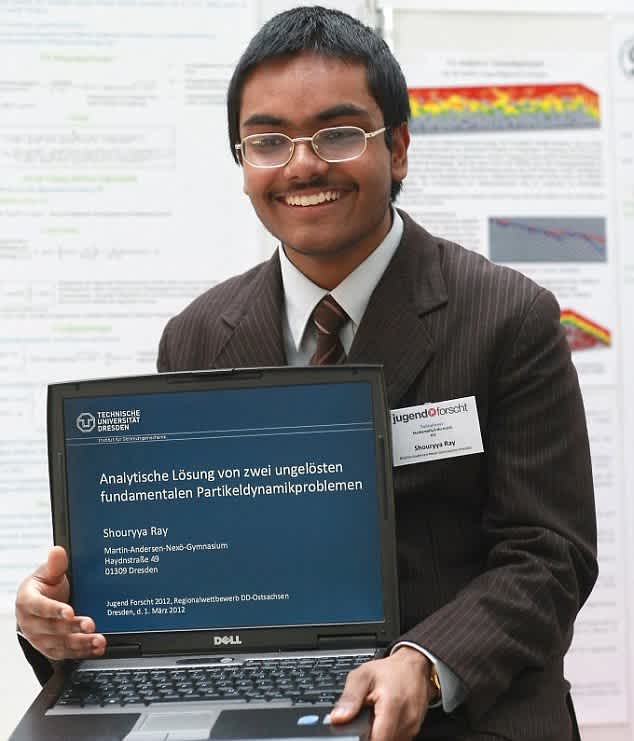
John Forbes Nash Jr
One of my favorite films of all time is A Beautiful Mind, a 2001 drama based around the life of mathematician John Forbes Nash jr. He’s widely regarded as one of the greatest mathematicians of the 20th century. But for all the unbelievable details the award-winning film brought to the silver screen, John’s real story was actually way more dramatic than it let on!
John had always shown an aptitude for maths, which initially led him to pursue a major in chemical engineering. Not long after, he switched majors to chemistry! It was only through the persuasion of his professor at the time that he finally switched over to mathematics.
After graduating with a masters in 1948, he accepted a fellowship to Princeton University. By 1950, he’d penned a thesis that changed the world’s understanding of game theory, with his concept of the Nash Equilibrium becoming the cornerstone of economic philosophy.
Inside a 28-page thesis, John had changed the economic world as we know it. But he was far from a perfect role model. In 1952, while working at MIT, he began a relationship with Eleanor Stier, got her pregnant, and then left her when she revealed she was pregnant. It’s claimed he did this because he thought her social status was beneath his.

For a guy who was good at numbers, that was a real low move. Though it was going to get worse. In 1954, he was arrested for indecent exposure, and stripped of his security clearance allowing him to work on top-secret operations at the time.
Then things began to turn around. He met his wife, Alicia, and married her in 1957. They had a son together. But then things took a downward turn again. In 1959, John gave a lecture at Columbia University. His peers were expecting great things, but the lecture he gave was incomprehensible nonsense. That’s when they suddenly realized John was very, very unwell.
He was admitted to hospital and was soon diagnosed as having paranoid schizophrenia. Over the next 9 years, John would spend his life in and out of psychiatric hospitals, trying every pill and procedure to help stabilize him, including insulin shock therapy.
This is where doctors administer huge doses of insulin to a patient, forcing them into daily comas for a series of weeks or even months. This would, theoretically, reboot the brain. The science behind the treatment was shaky at best, and while it’s still practiced in some places around the world, it had fallen out of favor by the 1970s.

The stress that came with managing John’s illness saw his wife divorce him in 1963, but by 1970, John was discharged from hospital for good. He stayed in his ex-wife’s house as a lodger, and after years of perseverance, learned how to consciously discard his paranoid delusions.
He was allowed back to Princeton to audit classes and was eventually allowed to teach again all while living a very quiet and humble life. Then, in 1994, the big moment came. He received the Nobel prize for his work on the equilibrium theory, which had impacted almost every sector of the economic world!
After this, his story was immortalized in a biography called A Beautiful Mind, which was then adapted for the big screen. And while John was far from a perfect human being, he did prove that perseverance in the face of adversity makes the most amazing things possible.













![Embarrassingly Dumb Ways People Died - Darwin Awards Winners [Part 14]](http://images.ctfassets.net/l031eph9pzsg/686De1sLP59fCNWLkbDwm5/4031ad820164610867ececf9513ce5ce/embarrassingly-dumb-ways-people-died---darwin-awards-winners-_part-14_.jpg?w=750&h=422&fl=progressive&q=50&fm=jpg)













